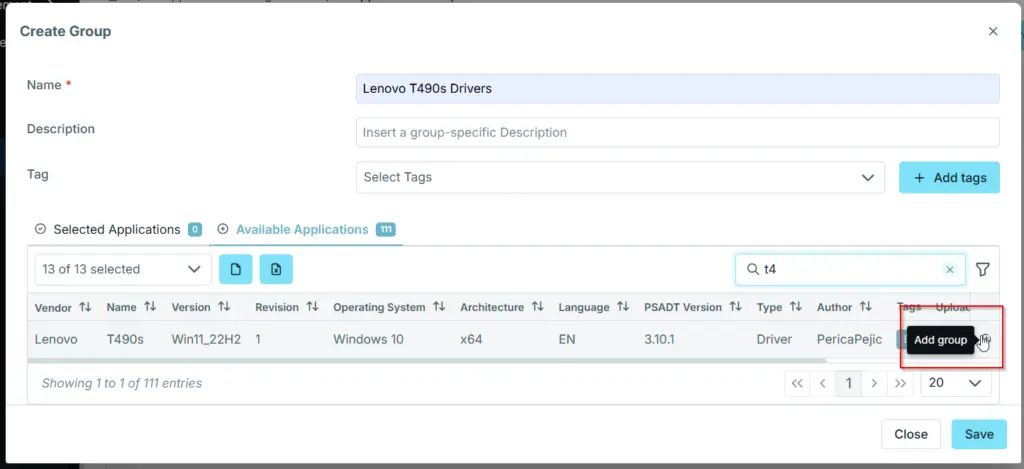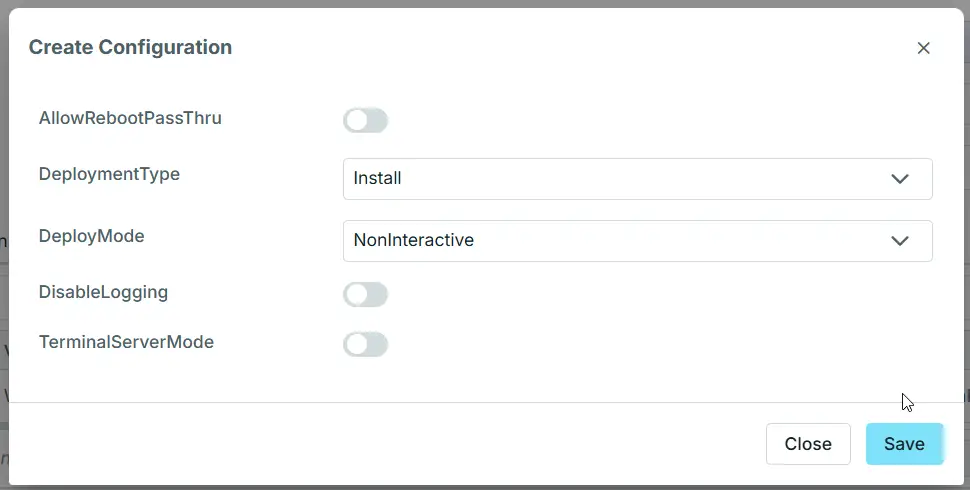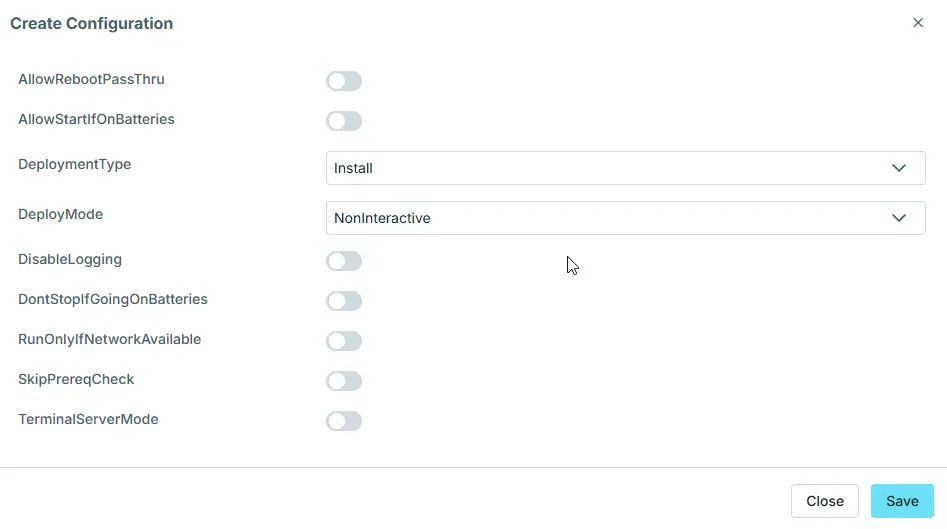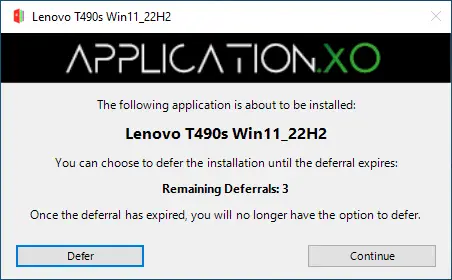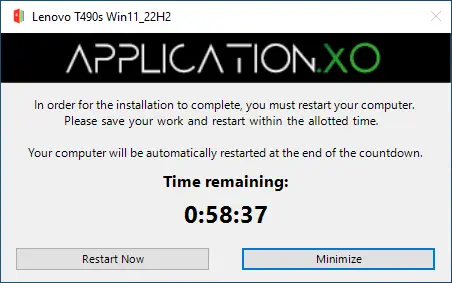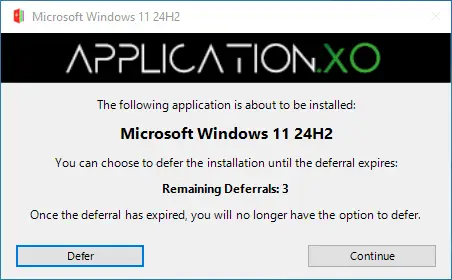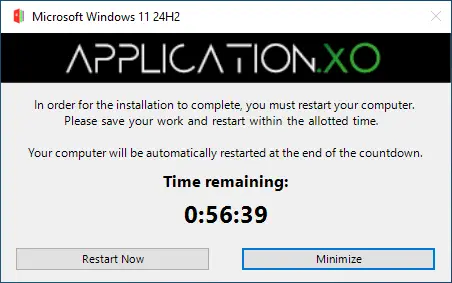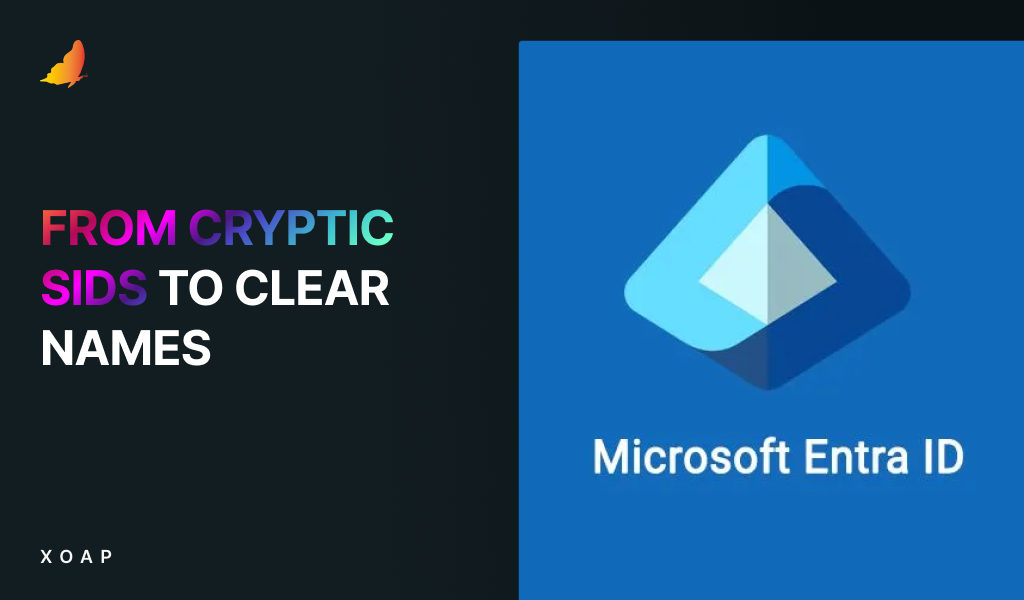This quick guide shows how to upgrade Windows 10 devices to Windows 11 using XOAP. The example uses Lenovo T490s and walks through setting up driver and application groups, then deploying them through XOAP. You can apply the same approach to your own device type. If you need assistance, contact us here. Let’s get started!
Upgrade to Windows 11 with XOAP: Simple steps
In this example, we are going to configure the migration for Lenovo T490s devices.
Inside XOAP’s Application Management, we have created 2 Application Groups from our Applications:
- Lenovo T490s (installs Windows 11 drivers for Lenovo T490s)
- Migration to Windows 11 24H2 (installs Windows 11 24H2 as an in-place upgrade)
To create an application group for driver installation, you need to:
- Download the corresponding driver package for your device from a manufacturer’s web page (for our example: Lenovo PC Support – ThinkPad T490s).
- Extract and package those drivers using PSADT. For the installation part, you can use the following command inside PSADT: pnputil /add-driver $dirFiles\tp_t490s_x390_w11_22_202210\*.inf /install /subdirs
- Import the created PSADT Package in XOAP: Application Management > Applications > New Application.

After that, you can navigate to Application Groups and create an Application Group using the imported application. Application Management > Application Groups > New Group.
2-minute overview of the migration process
In the New group window, set the name for the application group and search for your imported application. Once you find the correct application, go to Add Group and choose your installation settings for that package.
When creating an Application group from Windows 11 24H2 Application, there area a couple of options to choose from:
- AllowStartIfOnBatteries
- DontStopIfGoingOnBatteries
- RunOnlyIfNetworkAvailable
- SkipPrereqCheck (skips all prerequisite checks for Windows 11)
After that, we create an Application Role from those 2 Application Groups.
After the Application Role is created, we have to create a Configuration Group, inside of XOAP’s Configuration Management, by choosing our Application Role and XOAP_Applications_and_Monitoring configuration.
Then, download the registration script and deploy it to clients. Once the configuration is started on clients, both of our packages (Drivers and Win11) are going to prompt for user confirmation before installing and for a restart after installation.
All set!
That wraps it up. Once everything’s in place, XOAP takes care of the upgrade. Just adjust the steps for your own devices and you’re good to go.


